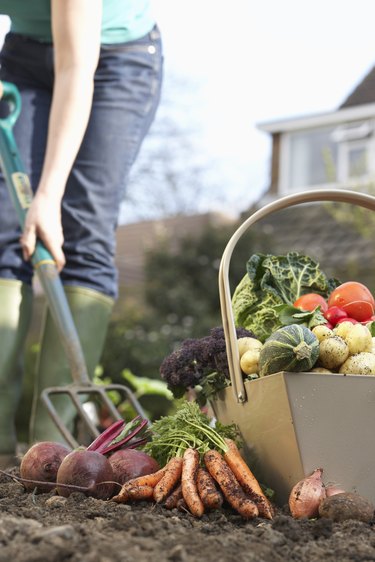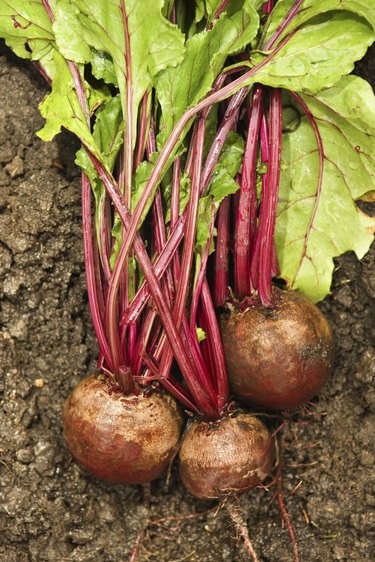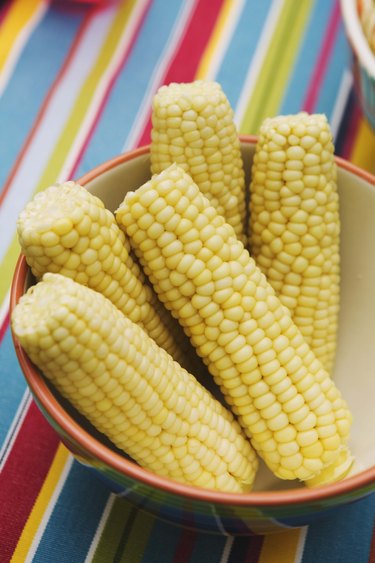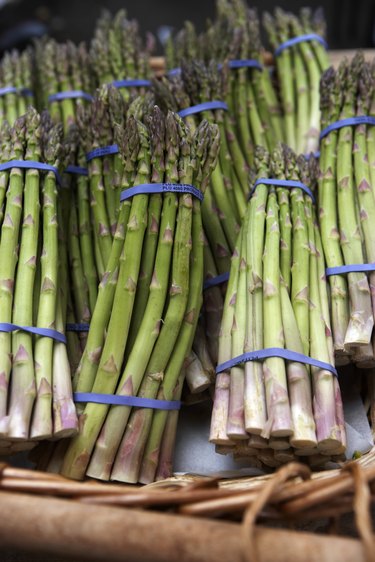
The glycemic index or GI measures how your blood sugar is affected within two to three hours of eating foods that contain carbohydrates. Foods that are rated as high GI have a glycemic index of 70 or above. Foods rated as low GI are 55 and under, while foods rated as medium GI are between 56 and 69 on the GI scale. Starch is a form of carbohydrate. Each serving of starchy vegetables contains approximately three times the carbohydrate content of non-starchy vegetables, according to the American Institute for Cancer Research.
Tubers and Root Vegetables
Video of the Day

Starchy tubers, such as potatoes and sweet potatoes, are rated at 85 and 61, respectively, according to the Glycemic Index Chart, or GIC, on Glycemic-Index.org. Other members of the tuber family, such as pumpkins and squash, are also high in starch. The GIC rates pumpkin at 75. Parsnips and turnips are root vegetables that contain high amounts of starch and are rated at around 97, while beetroot is rated at 64.
Video of the Day
Grains and Legumes

Sweet corn, or maize, is a variety of grain, but sweet corn cobs are picked when they are immature and soft, unlike other corn varieties that mature before harvesting. Sweet corn is classified as a starchy vegetable and has a medium GI rating of 54. Broad beans are a type of starchy legume with a relatively high GI rating of 79, while green peas are also classified as starchy but have a lower GI rating of 48.
Cruciferous Vegetables and Alliums

Cruciferous vegetables, or vegetables that belong to the Brassicaceae family, include broccoli and cabbage. These are non-starchy vegetables that contain phytochemicals, vitamins and minerals that link them to lower risk of diseases such as cancer, says registered dietitian Elaine Magee at WebMD. Brussels sprouts, cauliflower, bok choy, turnip greens, collard greens, watercress and radishes are also non-starchy vegetables in the Brassicaceae family. These vegetables have a low GI rating. For example, broccoli and cabbage have a rating of 6, according to the GIC. Non-starchy vegetables from the Allium family, which are also known as "bulb" vegetables, include onions, leeks, garlic and shallots.
Stem and Leaf Vegetables

Stem vegetables such as celery, asparagus and fennel are non-starchy vegetables. Their low amounts of starch give them a low GI rating. For example, asparagus is rated at 8, according to the GIC. Green leafy vegetables, such as lettuce, spinach, watercress and chard, are non-starchy vegetables that are often eaten raw in salads. Spinach has a low GI rating of 6. The American Diabetes Association recommends a daily intake of at least three to five servings of non-starchy vegetables, such as dark leafy greens, to maintain good health.